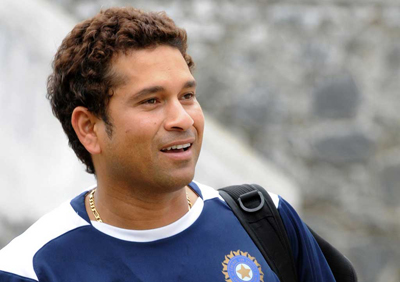
Cricket was first played in the Test format over a span of five days between a few teams like England, Australia and South Africa. Soon, other countries too joined in and started playing cricket, taking it as a serious sport. Test cricket was at its peak until the first ever 60-overs one-day international match was played between Australia and England at MCG in January 1971. It was inevitable then, that this format of the game had to become so popular that the first limited-overs World Championship of Cricket was played in England just four years later, which the West Indies won and began their era of world glory.
From there on, ODI cricket has never looked back. It has been prone to drastic changes. For instance, in the 1980s, the ICC reduced the amount of overs in a limited-overs fixture from 60 to 50, making the game more interesting for spectators. And till today, a one-day international game remains a usual 50-over affair. Since the era of commercializing cricket perhaps began in the 90’s, it was expected that the ODIS would be a hit among business houses as well, who would be willing to market their brands as viewers across the world are glued to their television sets watching a cricket match intensely as ever.
More World Cup tournaments were held with coloured clothing introduced in the 1992 edition of the World Cup, which was the idea of Kerry Packer, the Australian who revolutionised cricket with coloured clothing as early as the 70’s. White balls were introduced, making it possible to host day-night matches. With its instant success, white balls were given the thumbs-up to be used in day matches as well which even required new, black sight-screens. Thus there was no reason why the one-day game could not have captured the imagination of even the most ardent fan of Test cricket.
But then came perhaps the most exciting phase in cricket’s lifecycle. In 2003, a new version of limited overs cricket called the Twenty20 was introduced in England. This format meant that unlike matches in which each team had to bat 50 overs, here the teams have to bat just 20 overs each or 120 balls in simple terms. Consequently, matches would get over in a minimum of three hours and runs would be scored at a much rapid rate. Twenty20 became a hit in England and thus like the one-day game, Twenty20 had taken the world by storm. It has reached its peak as spectators would be more willing to watch a much more adrenalin-pumping and short Twenty20 game rather than a relatively boring and a longer 50-over game.
The inaugural Twenty20 World Cup in 2007 in South Africa, saw a large number of audiences in the stadium as well as on television, bettering the 2007 50-over World Cup in the West Indies by a massive margin. And to top it all, India won the Twenty20 World Cup, resulting in more fan-following as India is a popular team in most cricketing countries. All this played catalyst in the formation of the Indian Premier League (IPL) which is the brainchild of Lalit Modi, the then vice president of the BCCI. The tournament was played between the top 8 cricketing cities across India in its first three years, becoming a hit amongst viewers across the world as well as international players in the first edition itself in 2008.
Modi and co. basked in the glory of the IPL and were confident that the tournament would do well to capture the breaths of the South African audience the following year, as there were general elections to be held in India. Though most of the franchises suffered losses, major cricketing centres such as Durban and Johannesburg saw sell-out crowds for some of the matches, especially in those involving South African cricketers.
Other countries like England and Australia were keeping a close eye on the ‘success story’ which is the IPL, and decided to form their own tournaments based on its concept as cricket then would reach to a new level in the countries due to the dwindling interest of people there in the one-dayers. The ICC too was reckoning whether the IPL must have a place in the future tours programme (FTP), an issue which still has not been solved completely.
However, the one-day game still has a place in cricket even if cricketers such as Graeme Swann give importance to either test cricket or Twenty20s and believe that the format should be scrapped completely. Afterall, ODIs determine whether a batsman is wholesome, i.e, if he can defend as well as attack, reacting to the situation as demanded. It shows whether bowlers are skilled enough to contribute for their team in just 10 overs of bowling. It tests the pressures of fielders, which determine fielding standards of a team.
So, ODIs can survive as long as the ICC gives meaning to it in its FTP. The delaying of the Test championship until 2017 could well be a blessing in disguise to revive the ODI game as the ICC has decided to continue with the Champions Trophy which will be played every two years and in all certainty, will not overlap with the 50-over and the 20-over World Cups respectively.

The great Sachin Tendulkar suggested that the one-day format could be further revamped by making it like a longer Twenty20 in the test style where each team bats 25 overs in two innings each and are followed by strategic time-outs. This makes the scoring rate faster like the Twenty20 and could rekindle the interest of audiences across the world. It is an interesting thought and Australia tried it out in their domestic ODI tournament, the Pura Cup last year. However, its ineffectiveness caused the ICC to reject the idea for the time-being.
The ICC is running out of ideas and ODI cricket is unlike to regain its popularity despite India winning the 2011 World Cup at home. It was one of the most successful ICC events of all time as the Indian subcontinent is the home to almost 70% of cricket fans across the world. Yet, a few months later, there is a different story to tell. In the metros such as Kolkata and Mumbai, there were almost empty seats seen in the matches between India and England.
The one day format is falling apart thanks to all countries accepting Twenty20 as the future of the game. Twenty20s seem to be a practical way of playing cricket these days. With events such as the IPL, the one day game is nowhere at the moment. Reducing ticket prices won’t help if people are not interested and patient in watching 50-over cricket. The 50-over game can survive if the ICC doesn’t act like a puppet to the BCCI and respects the quality of cricket rather than the money involved in it otherwise its time to bid goodbye and fully embrace Twenty20 cricket in the future.

Leave a Reply